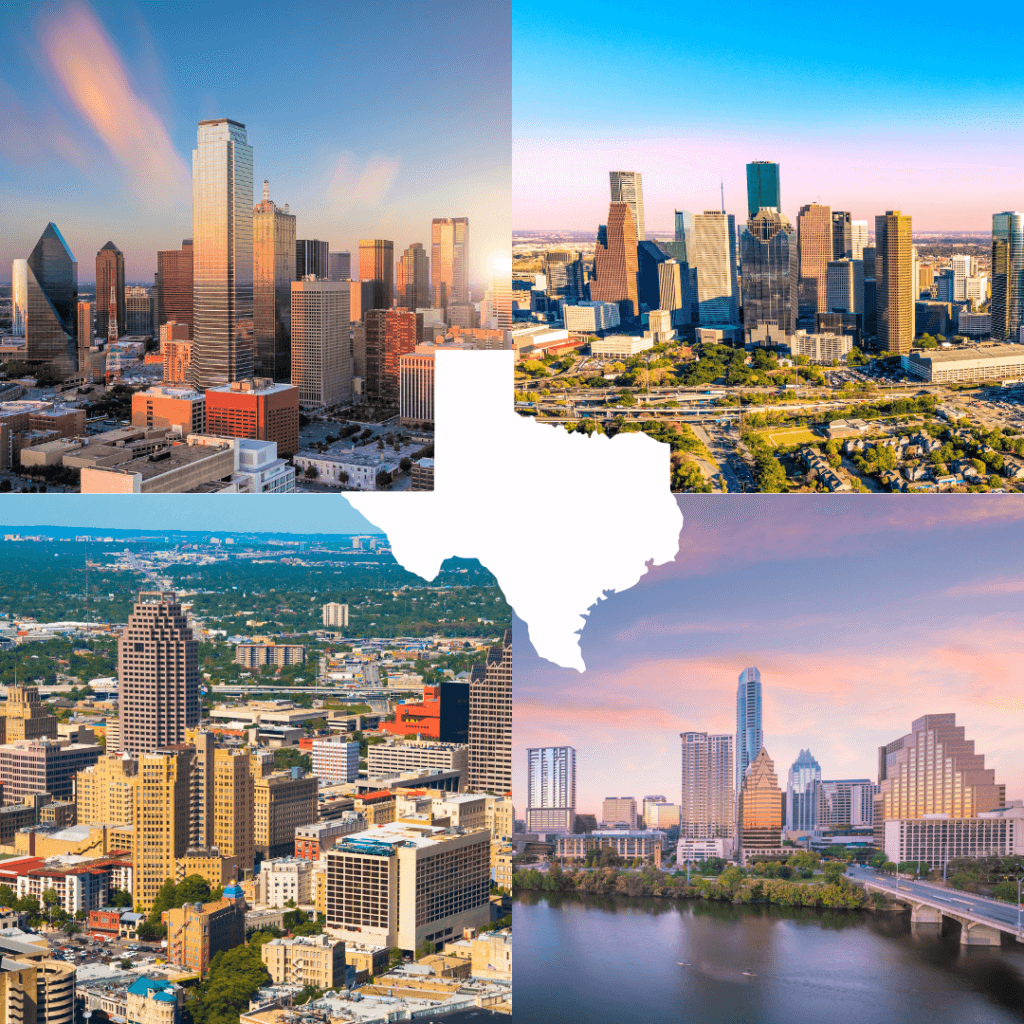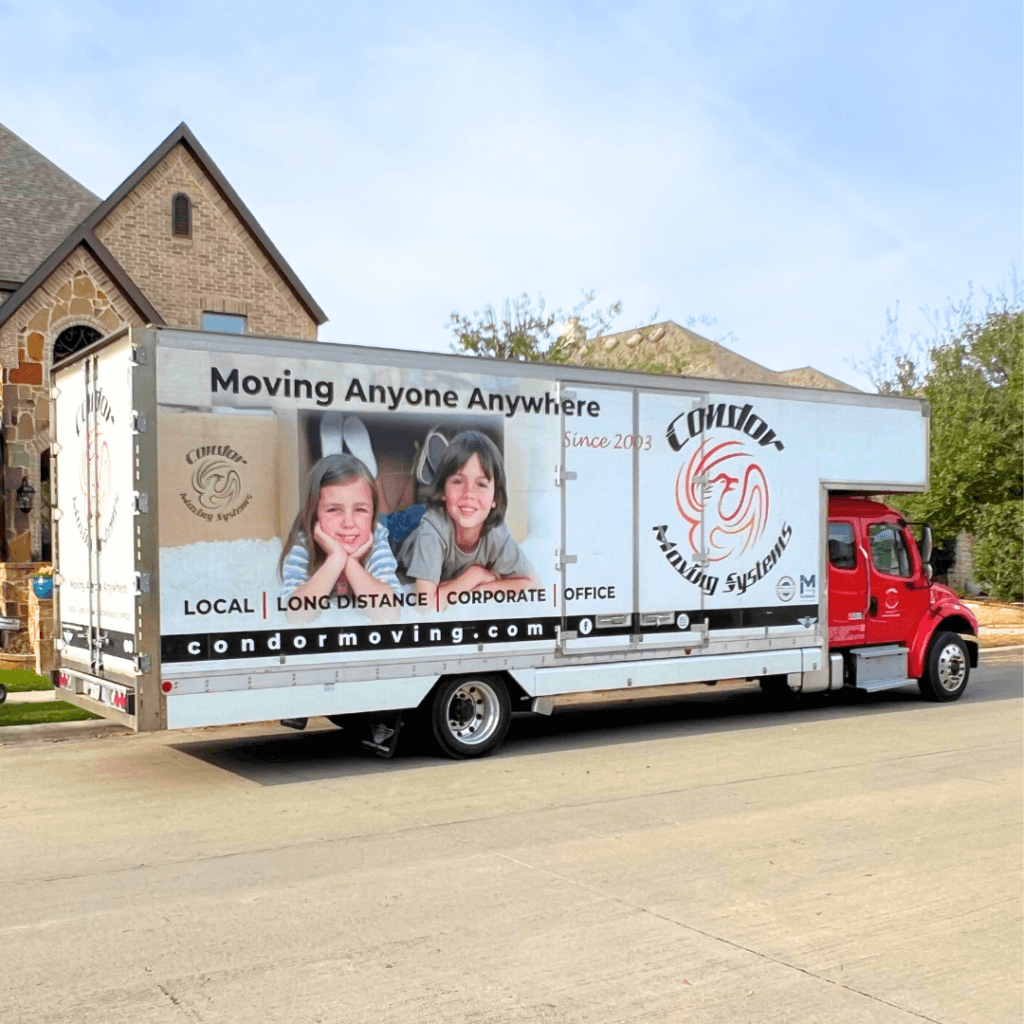When considering a move to one of Texas’s major metro areas—Dallas/Fort Worth, Austin, Houston, or San Antonio—it’s important to understand that each city offers a distinct lifestyle, culture, and set of challenges. From differences in cost of living and job opportunities to traffic patterns, weather conditions, and local food scenes, these cities reflect the diversity and dynamic nature of Texas. Whether you’re drawn to Austin’s creative energy, Houston’s cultural diversity, DFW’s business hubs, or San Antonio’s rich heritage, this guide will help you compare key factors to make an informed decision about where to call home.

1. Cost of Living Differences
- Dallas/Fort Worth: The DFW metroplex offers a wide range of living costs, with affordable suburbs like Arlington, Mesquite, and Grand Prairie. However, upscale areas like Frisco, Plano, and downtown Dallas come with significantly higher housing prices and living expenses.
- Austin: The Austin metro area is the most expensive, with skyrocketing housing costs in the city and surrounding suburbs like Round Rock and Cedar Park. While outlying areas like Kyle and Buda are slightly more affordable, prices remain high due to the tech boom.
- Houston: The Houston metro area is relatively affordable, with budget-friendly housing in suburbs like Pasadena, Pearland, and Spring. While neighborhoods like The Woodlands and West University Place are pricier, overall living costs are still lower than Austin or Dallas.
- San Antonio: The San Antonio metro area is the most budget-friendly, with affordable housing in areas like Converse, Universal City, and Schertz. Even in popular neighborhoods like Alamo Heights and Stone Oak, the cost of living is lower compared to the other major Texas metros.
2. Traffic and Commute Challenges
3. Climate and Weather Variations
4. Cultural and Lifestyle Vibes

5. Job Market and Economic Opportunities
- Dallas/Fort Worth: DFW has a booming job market with strong opportunities in finance, technology, healthcare, and corporate headquarters for major companies like AT&T and American Airlines. The metroplex’s diverse economy makes it a hub for professionals seeking high-paying roles across various industries.
- Austin: Austin’s job market is driven by the tech industry, with companies like Dell, Apple, and Tesla creating a strong demand for tech professionals. The city also has a growing startup scene, offering opportunities in creative fields, education, and government sectors.
- Houston: Houston is an economic powerhouse with a strong focus on energy, particularly oil and gas, along with healthcare, aerospace, and international trade. The city’s port, medical center, and energy corridor create diverse job opportunities for skilled professionals.
- San Antonio: San Antonio’s economy is anchored by military bases, healthcare, tourism, and cybersecurity, with growth in industries like finance and education. The city’s lower cost of living makes it appealing for entrepreneurs and those seeking steady employment in public and private sectors.
6. Housing Market and Rental Trends
- Dallas/Fort Worth: The DFW metroplex offers a wide range of housing options, from luxury apartments in Uptown Dallas to more affordable homes in suburbs like Arlington and Denton. While housing prices have risen, there’s still relative affordability compared to other major U.S. cities, especially in outlying areas.
- Austin: Austin’s housing market is highly competitive, with skyrocketing prices driven by tech industry growth and population influx. Rentals in the city center are expensive, pushing many to suburbs like Pflugerville and Hutto for more affordable options, though prices are rising there too.
- Houston: Houston’s housing market is more affordable, with a diverse range of options from high-rise apartments downtown to spacious homes in suburbs like Sugar Land and Cypress. The city’s sprawling layout helps keep housing costs lower compared to Austin and Dallas.
- San Antonio: San Antonio offers the most budget-friendly housing among the four cities, with affordable rental rates and home prices even in desirable neighborhoods like Stone Oak and Alamo Ranch. The slower-paced market makes it easier to find good deals without the intense competition seen in Austin.
7. Entertainment and Nightlife Scenes
- Dallas/Fort Worth: DFW offers a vibrant nightlife with upscale bars, clubs, and live music venues in areas like Deep Ellum, Uptown, and Sundance Square in Fort Worth. The metroplex also boasts world-class museums, professional sports events, and a thriving arts district.
- Austin: Known as the “Live Music Capital of the World,” Austin’s entertainment scene thrives with live performances on Sixth Street, eclectic bars, and major festivals like SXSW and Austin City Limits. The city’s laid-back vibe is perfect for food trucks, outdoor concerts, and local breweries.
- Houston: Houston’s nightlife is diverse, with trendy rooftop bars, nightclubs, and a strong arts scene in areas like Midtown and Montrose. The city also offers an impressive theater district, professional sports, and international food festivals that reflect its cultural diversity.
- San Antonio: San Antonio’s nightlife is more relaxed, centered around the famous River Walk with scenic bars, restaurants, and live mariachi music. The city also hosts cultural festivals like Fiesta and offers historic attractions, making entertainment family-friendly and culturally rich.
8. Family-Friendly Neighborhoods and Schools
9. Local Food and Dining Experiences
10. Moving Logistics Unique to Each City

Choosing between Dallas/Fort Worth, Austin, Houston, and San Antonio comes down to what fits your lifestyle, budget, and personal preferences. Each city offers its own unique blend of culture, job opportunities, housing options, and local charm—from the bustling business hubs of DFW to Austin’s creative vibe, Houston’s diverse energy, and San Antonio’s rich history. Understanding the key differences in cost of living, traffic, climate, and entertainment can help you make a move that feels right for you and your family. No matter which city you choose, Texas has something for everyone, and your next adventure is just around the corner. If you’re looking to hire professional movers to assist with your move, please contact Condor Moving Systems for a free moving quote.


